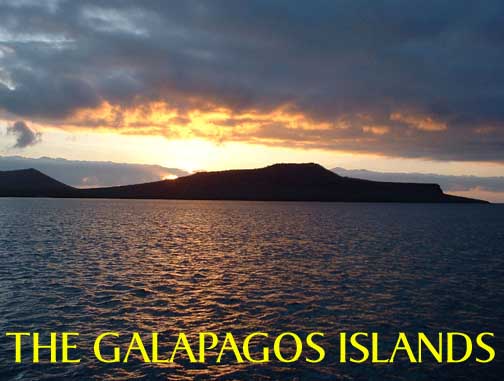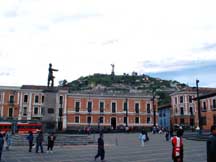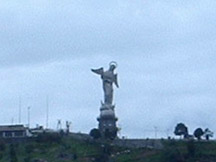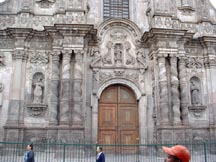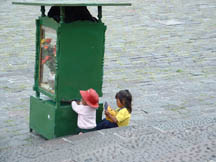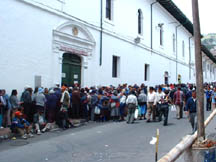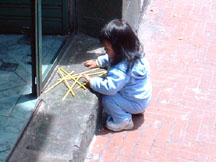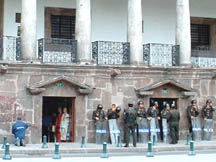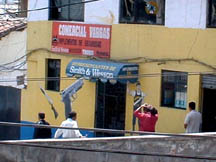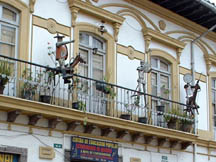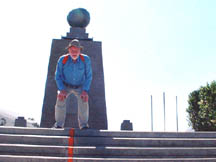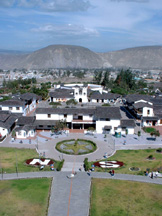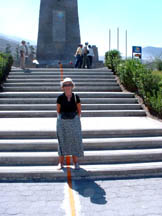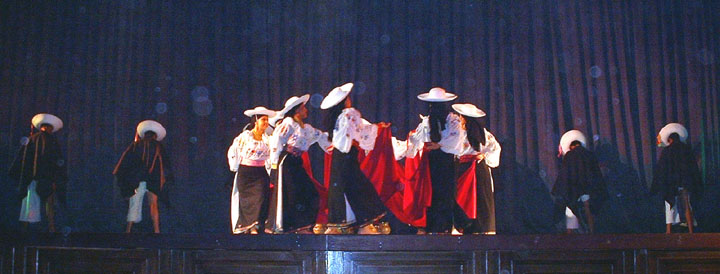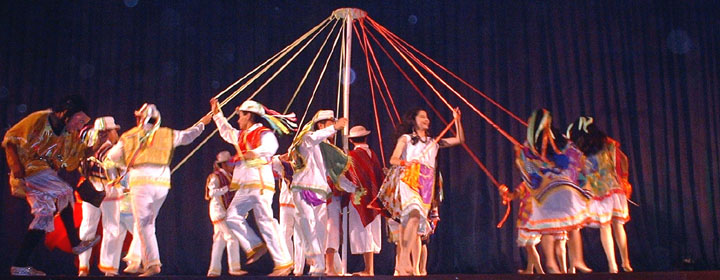|
The Galapagos Saga
This article is based on the e-mails that we sent home while we were on holiday in Ecuador and the Galapagos Islands during about four weeks of October and November, 2003.
|
|
Most of the smaller pictures are "clickable" to see larger versions. Use the "back" button on your browser to return to this page. |
|
This is the story of my recent great holiday with Jean (partner of some 20? years) in Ecuador and the Galapagos Islands. Galapagos exceeded all our expectations: every one who goes there raves about it and now we can see why. But let me take it in more or less chronological order. Our holiday was divided into three parts, about two weeks touring around Ecuador itself, particularly the rainforest region to the east, one week on a cruise to see as many as possible of the Galapagos Islands, then a couple of days extra to allow me to do a couple of dives (since our boat was not equipped for this), and then return to Quito and England. If you want to skip the Ecuador section and go straight to Galapagos click here: We arrived at Quito, Ecuador's capital, situated about 10,000 feet up in the Andes, feeling very shattered. From door to door our journey had taken about 24 hours with refueling stops at Newark and Bogota, though it went very smoothly and we got well fed on the plane. We ended up having two meals and two pretty substantial snacks during the journey and that was after weŽd had breakfast at home. I must commend Continental Airlines on all aspects of their services but particularly the very good food. We found a hotel in Quito but couldnŽt be too selective as we were exhausted and just wanted to fall into bed. We ended up with something pretty basic but clean and cheap: $5 each per night. |
|
Ecuador has adopted the US dollar as its official currency, after several economic collapses and two former Presidents absconding with large slices of the national wealth. One is presently living in Miami with the full complicity of the US government. For most of the second half of the twentieth century Ecuador was, not to put too fine a point on it, a banana republic. Governments, revolutions and occasional flirtations with democracy came and went, without changing the fundamental nature of the country and its ruling elite. However, in the last decade or so it has experienced a period of relative stability, with peaceful and democratic transitions between one government and the next. You can find more detailed accounts here and here. We saw a lot more poverty in the streets of Quito and the rest of Ecuador than we had in Costa Rica when we were there in February, but all the people we met were very friendly and helpful. Quite a significant proportion of the population is of indigenous or "Indian" stock, many of them living in tribal villages high in the mountains, or in the rainforests. They wear traditional costume, which is usually very colourful and attractive, all the women over the age of about seventeen seem to have a baby in a sling on their backs, and they speak Spanish as well as their own languages. Very little English is spoken anywhere in Ecuador, even in the big hotels and tourist offices, so without Jean's sub-'o' level Spanish we would have found the going very difficult. The tribal people were especially welcoming to strangers and helpful everywhere we met them. We were also impressed with the gentleness that the tribal people showed to one another. Parents were very loving towards their children (we saw a teenager of about fourteen or fifteen cuddling up to her mother on a bus, something I couldn't imagine a British teenager doing) and children practically never cried or seemed in distress. We also saw no harshness of any kind between husbands and wives. Tribal society seems to be very low on what Marx called "alienation". The city of Quito is a slightly different proposition with a lot of talk of street crime and robbery (though we didn't see any) and armed guards are posted at night on buildings of all kinds (theatres and restaurants and bus stations as well as banks and big shops). There are a lot of private security companies providing guards with automatic weapons, all of whom smile disarmingly and wish you a cheery "buenas noche" as you pass them by. |
|
shops, restaurants and exhibits. You can take your photograph with one leg in the southern hemisphere and one in the northern hemisphere, which we duly did. We found out later from an archaeologist we spoke to that the marked equator is incorrect by a distance of about 200 metres, something they have learned from GPS technology, but it's the thought that counts. The public transport in Quito is fantastic. For the main routes buses come every minute or so, for the minor routes such as the street that our hotel was in, every 20 mins. The city is long and thin and also has trolley buses which go from one end to the other for a fixed 25C fare. They run every few minutes and are wheelchair friendly. Longer haul buses are also very good and extremely cheap. We paid only $2 for a 2 hour journey. We went to a dance show in Quito which was a kind of choreographed version of the everyday life of Indians. It was very colourful with lovely costumes. The dancing was nice but a bit formal. It was a shame that there were so few people in the audience. I think we outnumbered the performers. |
